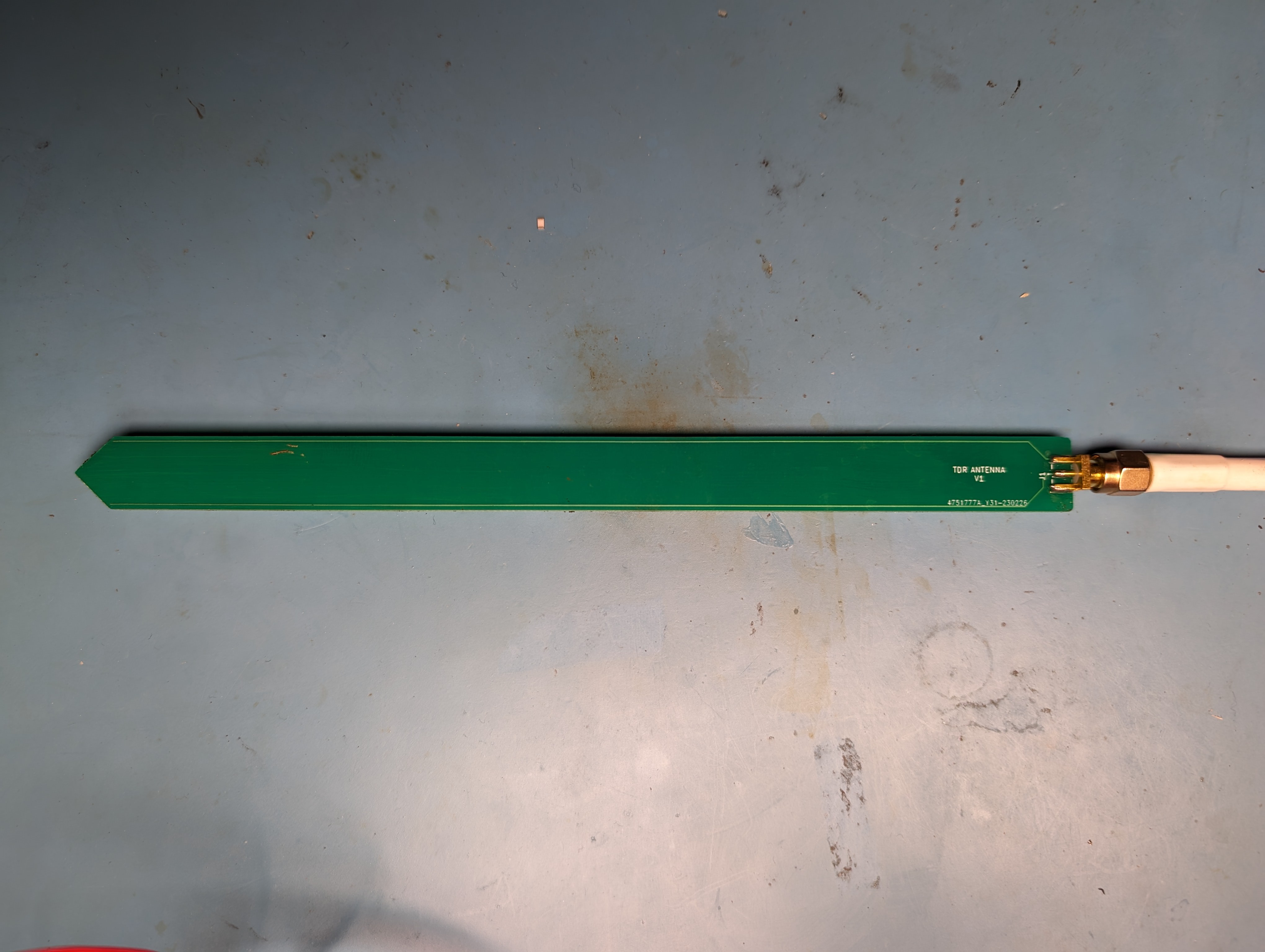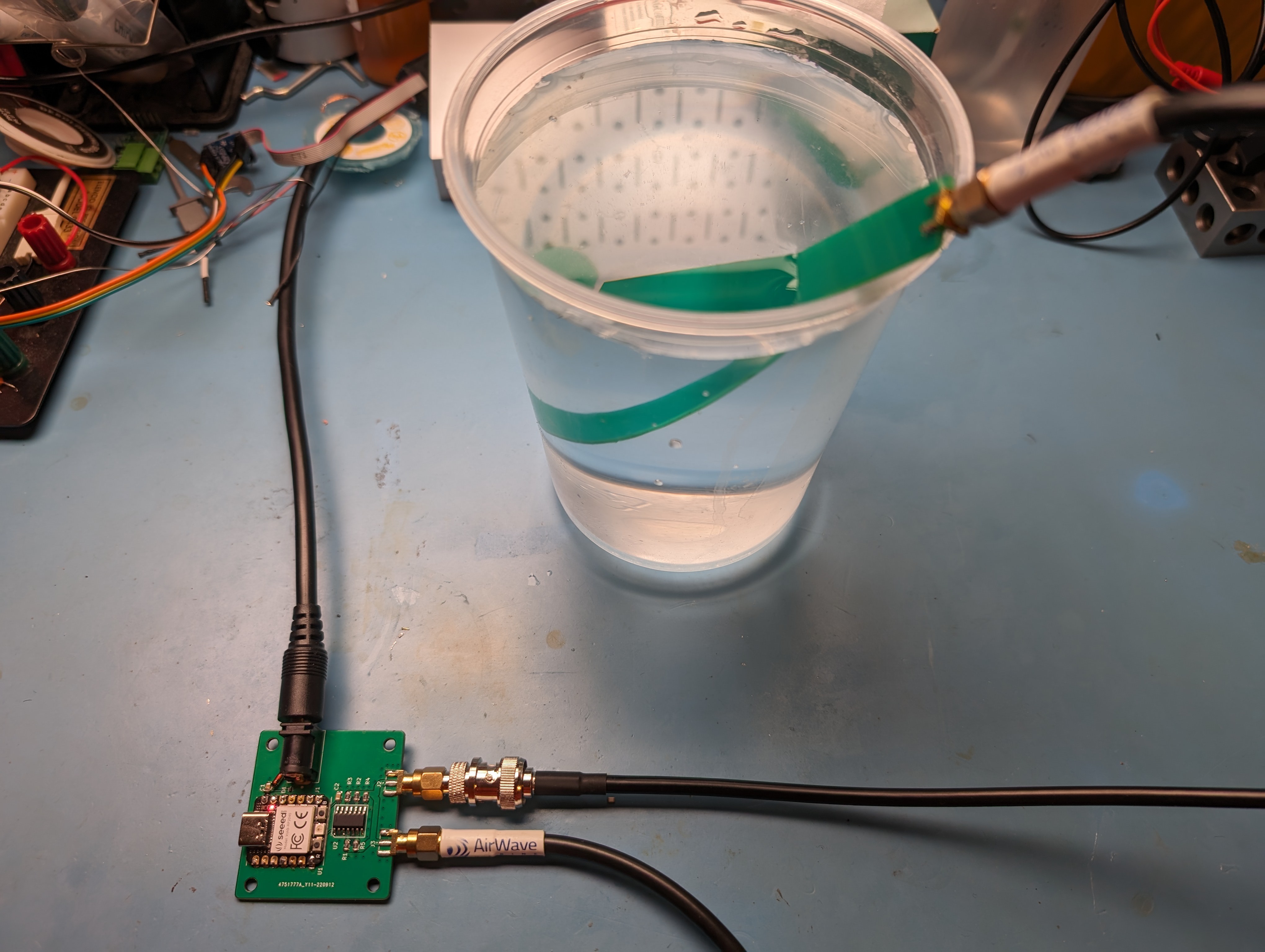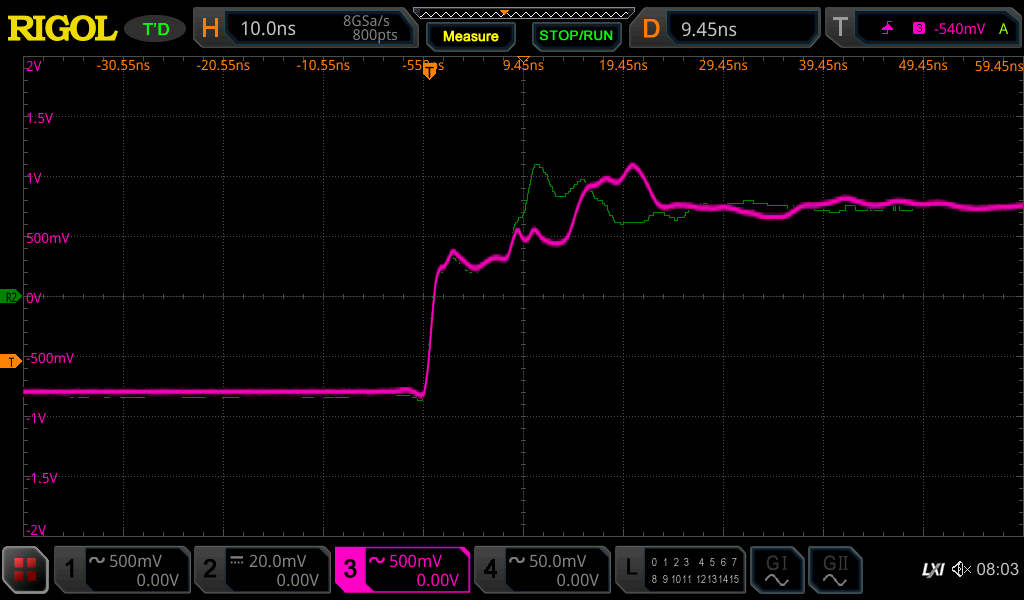I have no idea what design parameters are needed to maximize the effect of whatever medium the TDR step has on the propagation speed. So I started with just two stainless steel 2mm rods in parallel with ground on one rod and the pulse on the other. This did work, but the connection between the rods and the copper clad PCB I had just cut two pads into with a knife was not great. I ended up making another PCB for this.

There is no ground plane based on the thought that I want as much of the EM field to go through the surrounding medium instead of there being a short path to ground. The impedance of this trace will be higher than 50ohms, so in theory that will cause some refections as it goes from the 50 ohm cable to the pcb, but we only care about the last reflection that goes all the way down the trace.
To test how well this works, we can measure the difference between air and fully immersed in water

Which looks like this on the scope:

The green trace is the antenna in open air and the magenta trace is fully immersed in water. Most of the length of the step is the same, but at the 9ns the reflection starts coming from the antenna. Each division is 10 nanoseconds, so the water reflection is about 5 ns slower than open air. This is about the maximin difference we can expect to be able to detect.
So, lets stick it into some soil and see what it looks like.

Here the difference between the two traces are when the soil is dry and freshly watered. The antenna was not inserted as deep into the pot as it was into the water, so we can see the change is nearer the top of the step. It is also smaller because the change in water content is not as large between the dry and moist soil. In this case it is 3ns right after watering.
The difference in timing is only a few nanoseconds at best. That's pretty small and I'd like to be able to differentiate between various levels of moisture content which will need sub-nanosecond resolution. The good news is that it is a relative measurement. My scope which can only measure a rise time of about 1ns can resolve differences much less than that.
The original TDR article on EDN has a design for measuring the difference in TDR pulses, so the plan is to build one and test if it has the resolution needed for this application.
Discussions
Become a Hackaday.io Member
Create an account to leave a comment. Already have an account? Log In.